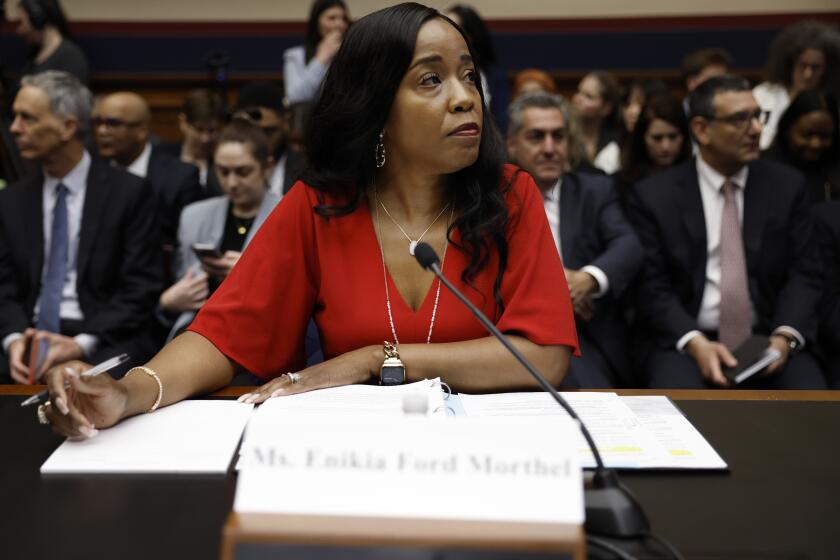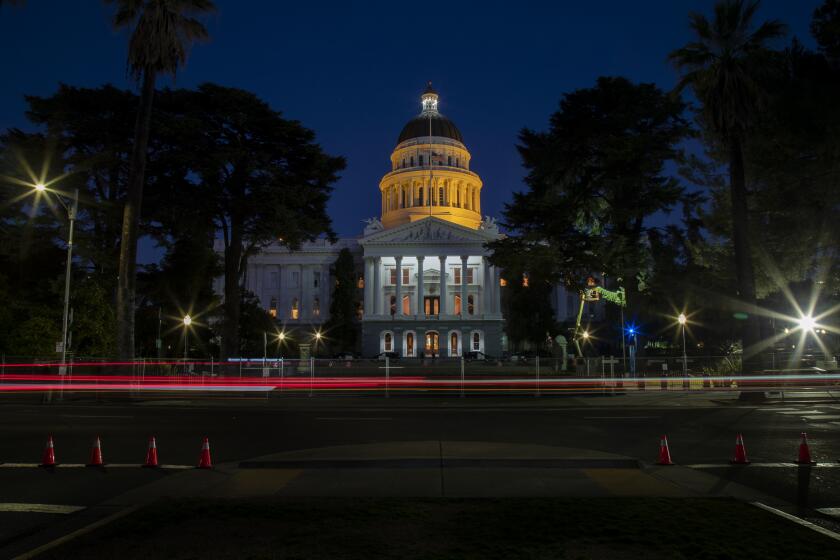Viewpoints : We’ve Got to Stop This Crazy Growth
The Los Angeles City Council recently voted to keep the city on a pro-growth track with its approval of the massive Porter Ranch project in the San Fernando Valley. Despite voter preferences to slow Los Angeles’ spiraling growth, city officials again caved in to developer demands over neighborhood interests.
Proposed by politically influential developer Nathan Shapell, the 1,300-acre development calls for 6 million square feet of commercial, residential, hotel and retail development in Chatsworth.
The story of Porter Ranch is similar to tales of other developments approved by local legislatures throughout Southern California. All involve wealthy, politically connected developers and their highly paid lobbyists, supported by large corporations, building trades and public utilities.
Together they form a “growth machine” that exercises political control over local land use policy. Scenarios like the Porter Ranch development that destroy Los Angeles’ varied and colorful neighborhoods are being played out in the Farmers Market development in the Fairfax area, the Watts neighborhood redevelopment, Hollywood redevelopment and Venice-Lincoln Boulevard development.
Development proponents insist that such growth is good for the city. The growth machine argues that building development creates more tax revenue, jobs and housing. These claims often win the hearts and minds of city officials.
But a closer look at these claims show them to be self-serving and untrue.
Take the issue of tax revenue. Growth advocates argue that development will create new business- and property-tax revenues. What growth proponents don’t explain is that development requires tremendous increases in public service and infrastructure costs that far outweigh increases in tax revenues. Harvey Molotch, a UC Santa Barbara sociology professor and growth expert who coined the concept of the growth machine, concluded this in his studies of development patterns in Santa Barbara. Molotch found that city expenditures needed to accommodate growth exceeded revenue created by growth.
These growth-created expenses are a primary reason why Los Angeles faces a budget crisis. Despite a decade of unprecedented building growth in which the city’s population increased by some 500,000 people, the city budget faced a $100-million deficit this year, forcing serious cutbacks in police, fire, sanitation, library, school programs and other essential city services. New building development such as Porter Ranch requires billions of dollars worth of city infrastructure and services such as sewers, street lighting, schools and roads.
The city’s environmental impact report disclosed that the Porter Ranch development will require an additional 28 police officers, a new fire station and 11 more classrooms. New infrastructure is required by the development to handle an additional 2.15 million gallons per day of sewage, 34.3 tons per day of solid waste and 2.07 million gallons of water per day during a period of drought. Most of these public services will have to be financed by tax and fee increases to city taxpayers.
Jobs and housing, the other battle cry of the growth machine, also does not stand up to scrutiny. Studying the relationship between growth rates and unemployment in 100 U.S. cities, Molotch found that rapid building growth and population increases had little effect on reducing local unemployment rates. In fact, Molotch found that cities promoting rapid building growth had unemployment rates which grew faster and above the national average.
Molotch discovered that new building development did not create new jobs, it merely rearranged job sites from one region to another. Like the infrastructure costs created by new development, new job sites create new population migration to fill the jobs. Any job gain to the local economy is canceled out by the massive population shifts that rush to fill them. People are not relocating to Los Angeles because of hospitable climate alone but rather to follow jobs relocating in ways that benefit growth and development interests.
The argument that growth creates needed housing was disputed by housing expert and University of Louisville Prof. John Gilderbloom, an associate of Molotch. Gilderbloom’s studies compared housing prices in 150 slow- and fast-growing cities. The research found that price levels for rent and housing increased in high-growth areas, exacerbating affordable housing shortages. Gilderbloom showed that new development has a price-leading effect on existing housing stock that usually prices low- and moderate-income residents out of the area completely.
The Porter Ranch development is a good example. Of the 2,195 single-family homes proposed by the Porter Ranch developers, all are expected to be priced between $400,000 and $600,000. Yet the majority of the new Porter Ranch work force will have incomes between $15,000 and $31,999, according to the city’s environmental impact report. Virtually none of the Porter Ranch work force can afford to buy a home in the Porter Ranch development, making a mockery of regional job and housing balance goals. The city’s environmental study reported that the project will create a shortage of 689 low- and moderate-income housing units, increasing the city’s shortage of affordable housing.
Research demonstrates that claims made by growth proponents do not pass the test of scholarly analysis. Despite this evidence, the City Council’s unanimous approval of the Porter Ranch project illustrates the relative ease with which the growth machine can dictate public policy.
Porter Ranch developers gave a total of $409,949 in campaign contributions to Los Angeles City Council members and Mayor Tom Bradley between 1982 and 1988, according to a Los Angeles Times survey. That included $50,000 to Chatsworth area Councilman Hal Bernson, $24,150 to council President John Ferraro, $28,100 to Councilman Robert Farrell and $27,800 to Councilwoman Joan Milke Flores.
Unfortunately, Los Angeles residents will have to suffer the consequences of such blatant impropriety by local policy makers. The development will generate an additional 150,602 car trips per day in neighborhoods already suffering from severe traffic congestion, according to the city’s assessment. Air pollutants generated by traffic from the project means an extra 15,000 pounds per day of carbon monoxide, a tripling of current smog levels in an area that already violates federal clean air standards 137 days per year.
The Porter Ranch development means a continued decline in the quality of life for Los Angeles residents--but an important gain for the growth machine.
More to Read
Start your day right
Sign up for Essential California for news, features and recommendations from the L.A. Times and beyond in your inbox six days a week.
You may occasionally receive promotional content from the Los Angeles Times.






